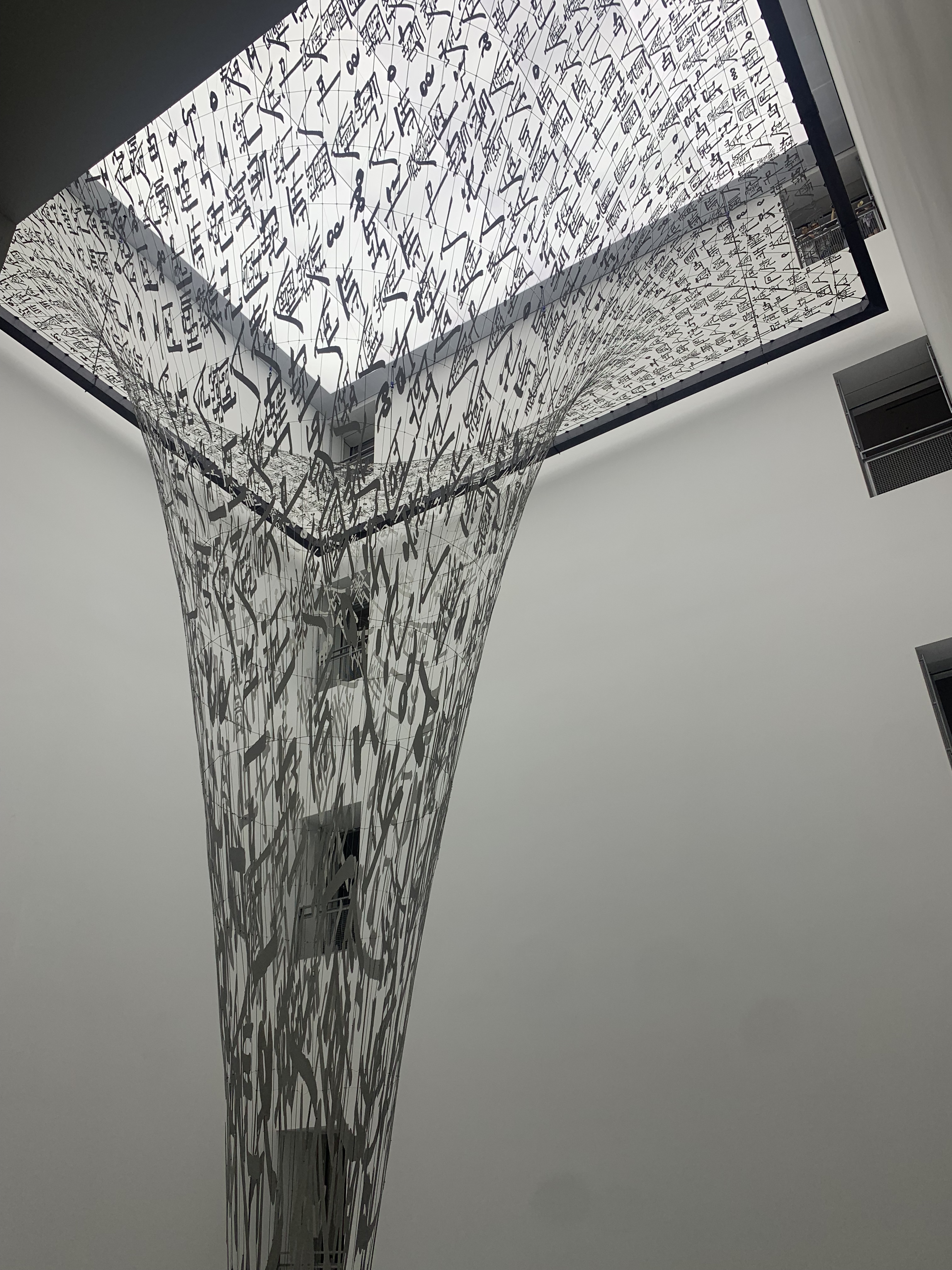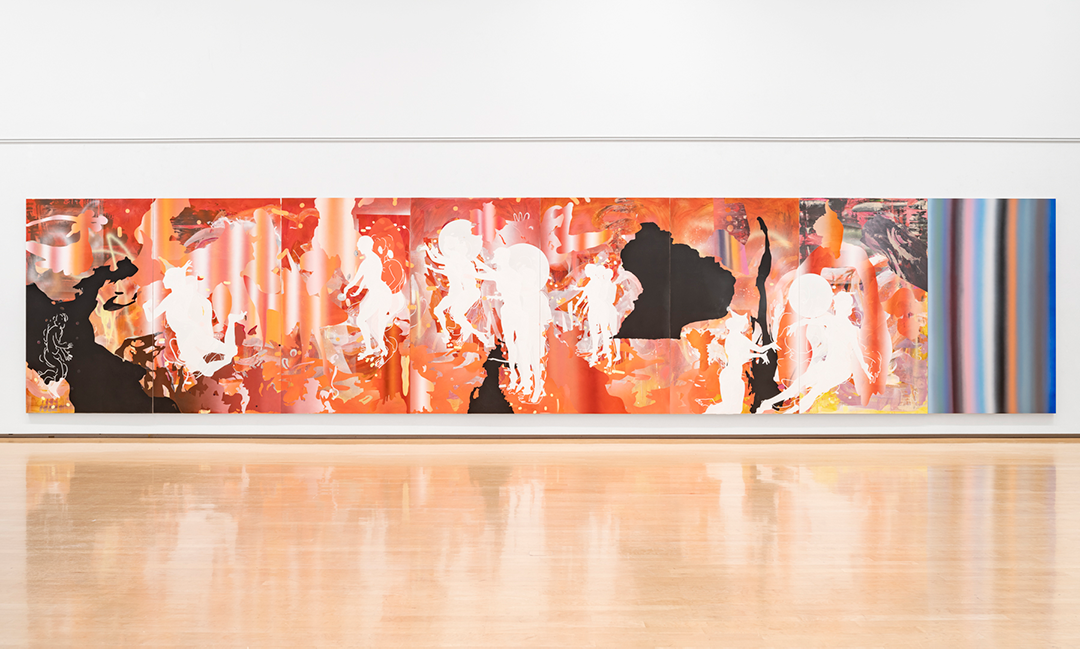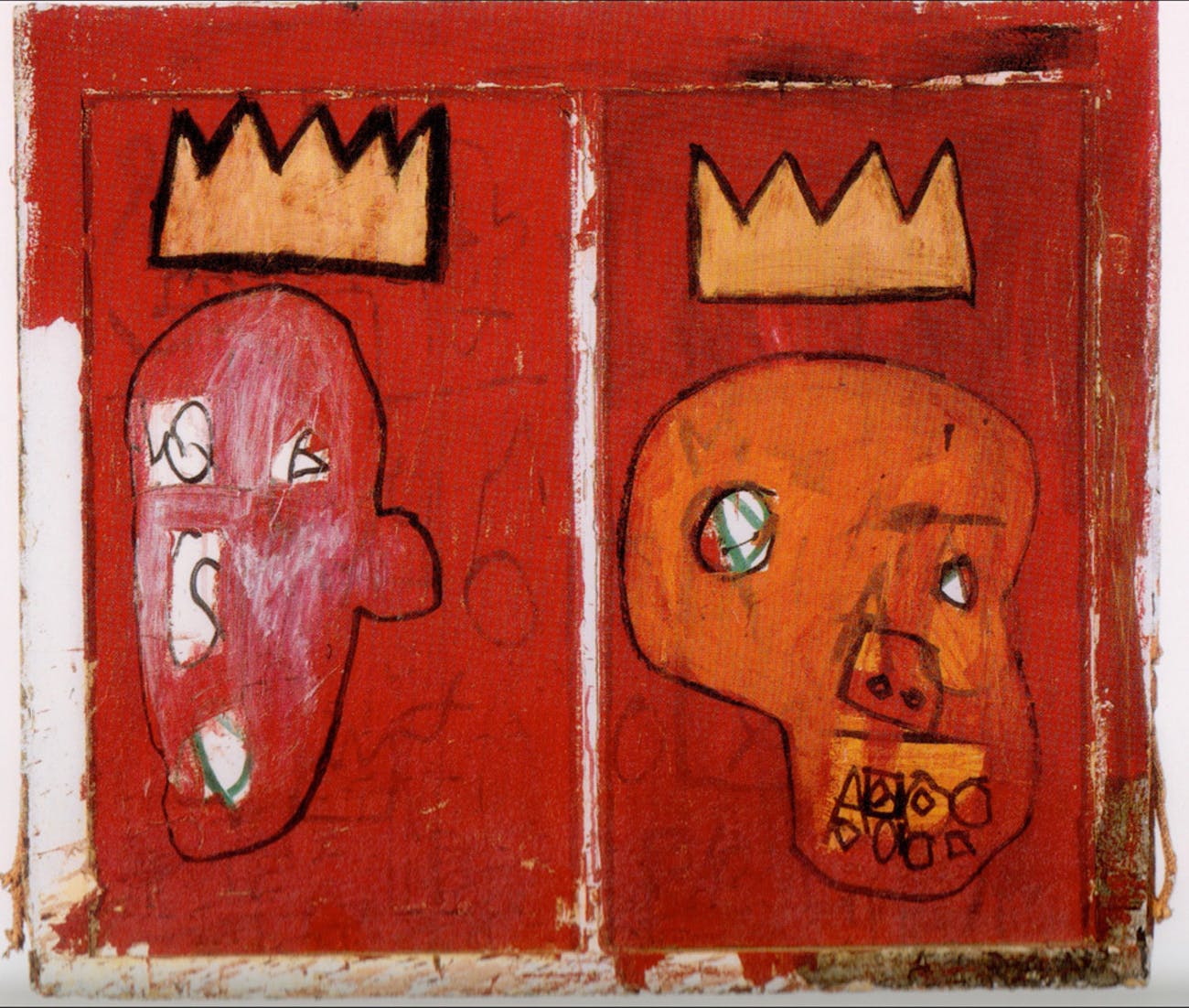Art Detective Crash Course: How to Interpret Contemporary Art from a Philosophical Perspective

Summary
This toolkit aims to guide learners through a 20 minute process of interpreting contemporary art using philosophical theories. By acting as an "art detective" and using a "philosophical filter," learners will complete a full creative process from observation and analysis to forming an opinion, exploring themes such as identity, space, and existence. In addition to providing a practical framework, this toolkit encourages learners to reflect on "how we see the world" and "how art reveals the secrets of our hearts."
Art Detective Crash Course
Ready to solve your first art mystery? Use this personalized 20 minute art detective simulator. You’ll receive a magical “philosophical filter,” transforming you into a detective to investigate and solve a mysterious contemporary artwork. No art history background required, just a curious mind!
“What we see is not the things themselves, but ourselves.”
Disclaimer
This toolkit may contain certain risks! Please read this disclaimer carefully before proceeding.
- This toolkit is intended for art appreciation and critical thinking training, not as the sole, absolute authoritative interpretation. The meaning of art is open-ended.
- Philosophical theories are used to initiate thought, not to end discussion. Please avoid the anxiety of “over-interpretation”; your first impression is equally important.
- Respect copyright. Artwork images referenced in this toolkit are for educational purposes, and copyright belongs to the artist or their heirs.
Required Materials
- Internet access and a smart device (for accessing this kit and viewing artwork images).
- It is strongly recommended to take your “reconnaissance notes” with pen and paper.
🕵️Welcome to the Art Detective Agency!
Calling all aspiring detectives!
The alarm is on! Feeling bewildered by contemporary artworks you can’t understand?
Don’t worry, it’s not your problem. You simply lack the “decoding lenses” to see through the fog.
Your mission: In the next 20 minutes, collect your gear, investigate the scene, use your mental tools, and ultimately submit a convincing “Art Detective Report.”
Remember: Our goal isn’t to make you an art history professor, but to experience the thrill of a “hacking moment” in solving a case.
Countdown begins!
Step 1: Obtain Your Detective Gear
【Mission: Head to the Gear Vault and choose your core reconnaissance weapon】
🔍 The Gear Vault doors are open: Choose one of three “philosophical filters”
Three “philosophical theory suppliers” are ready. Please choose one of the following three “philosophical filters” based on your intuition. This will be your perspective for this reconnaissance.
🪞 A. Heterotopia Filter (Supplier: Foucault)
- Weapon Characteristics: Spatial Perspective. Able to see through all “worlds within worlds.”
- Reconnaissance Creed: “Seek out those alternative spaces that are both real and bizarre.”
😶 B. Fragile Life Filter (Supplier: Agamben)
- Weapon Characteristics: Life Radar. Able to detect individuals forgotten and suppressed by the system.
- Reconnaissance Creed: “Witness for those beings deprived of their voices.”
🍂 C. Impermanence Filter (Supplier: Buddhist Philosophy)
- Weapon Characteristics: Flowing Vision. Able to capture the traces of change and transience in all things.
- Reconnaissance Creed: “Witness that everything is in flux, nothing is permanent.”
🔍 Equipment User Guide: Deeply Learning Your Filter Name
Welcome, Detective. Please take 3 minutes to familiarize yourself with your new equipment; it’s key to solving cases.
📖 Official Definitions (Quick File Creation):
【Heterotopia】: A real-world “alternative space” with its own rules and logic.
【Fragile Life】: A person stripped of their legal identity and rights by a political or social system, leaving only their biological existence.
【Impermanence】: Everything in the world (including you and me) is in a constant state of flux, change, and decay.
🌍 Real-world Case Studies (Activate Your Associations):
【Heterotopia】: → For example, Disneyland (a real, happy utopia, but with rules completely different from the outside world).
【Fragile Life】: → For example, a refugee in the system (their life is real, but may be “unseen” from a legal perspective).
【Impermanence】: → For example, the changing seasons (nothing illustrates better than this that “change” is the only constant).
🗣️ Core Investigative Questions (Remember these 3 questions, you’ll need them immediately!):
【Heterotopia】Investigation Triple Question:
1. Is it a ‘world within a world’?
2. Does it mix unrelated things or concepts?
3. Does it feel both real and dreamlike?
【Impermanence】Investigation Triple Question:
1. Does it depict a process of flow, change, or disappearance?
2. Does it reveal the interdependence of eternity and transience, existence and nothingness?
3. Does it make you feel both peaceful and melancholic?
【Fragile Life】Investigation Triple Question:
1. Is it in a state of exclusion from the system or at risk of being sacrificed at any moment?
2. Does it demonstrate the tension between biological existence and social disappearance?
3. Does it make you feel both compassionate and uneasy?
Step 2: Contemporary Art Scene Investigation
[Task: Arrive at the scene and conduct an unbiased initial observation]
Instructions: The first rule of a seasoned detective: Let the evidence speak for itself, not your imagination. Take two minutes to meticulously record everything before you, like a scanner. Only ask “what,” not “why.”

Ye Linghan, Yi, Nine-Colored Deer, Fire, 2023–2024, exhibition view of “Ye Linghan: Yi, Alice”, Hyogo Prefectural Museum of Art, Kobe, 2024, photography: Kenryou Gu
[Your Investigation Notes – Please record only the facts here]
- Main Target: ________ (e.g., several human figures composed of digital pixels and classical Chinese murals)
- Facial Features: ________ (e.g., blurred or absent expression, blank face or covered by data streams)
- Environmental Data: ________ (e.g., background of fragmented data turbulence, classical sculptures intertwined with fluorescent network symbols)
- Atmosphere: ________ (e.g., a clash between technological and classical elements, filled with a psychedelic and alienating feeling)
Step 3: Apply Your Filter
[Task: Activate your philosophical filter and perform a deep scan of the target]
Instructions: Detective, it’s time to activate the [Filter Name] you received! Please use the following questions as your searchlight to re-examine Ye Linghan’s painting.
🗺️[If you choose A: Heterotopias]
[Interrogation Question ①]: What part of the painting do I think most resembles an “alternative space”?
A. The entire virtual plane where this digital and classical hybrid exists.
B. The junction of cultural symbols from different eras within the image.
C. The superimposed world created by the painting, which is neither purely virtual nor entirely real.
[Interrogation Question ②]: What is the most prominent “contradictory hybrid” in the painting?
A. The sacredness of classical art and the secular symbols of consumer culture.
B. The meticulously crafted brushstrokes and the low-resolution digital pixels.
C. The juxtaposition of Eastern aesthetics and Western popular culture.
[Interrogation Question ③]: What is my overall feeling about this space?
A. Familiar yet strange, like a labyrinth of cultural memory
B. Completely surreal, an alternate dimension of the digital world
C. A spiritual sanctuary with some purifying or reflective function
🌞[If you choose B: Fragile Life]
[Interrogation Question ①]: Does this composite image present a state of being gazed upon and defined?
A. Yes, it seems to be enveloped and defined by various cultural symbols and capitalist labels.
B. Yes, it’s like a digital life form disciplined by algorithms and data flows.
C. Not entirely; it seems to be struggling, trying to break free from these external definitions.
[Interrogation Question ②]: Does this collage method reveal what characteristics of individual identity in the digital age?
A. Fragmentation and passive construction of identity
B. The true self being replaced by a data-driven image
C. Loss of individual initiative under systemic discipline
Interrogation Question ③]: What is the strongest feeling this image gives you?
A. It is unique, carrying a tragic struggle.
B. It feels infinitely replicable and replaceable, anonymous.
C. It is both concrete and abstract, a microcosm of countless people in this era.
⌛️[If you choose C: Impermanence]
[Interrogation Question ①]: What does this collage style itself imply as something continuously happening?
A. The constant flow and reorganization of cultural symbols and digital images.
B. The generation and collapse of meaning and value.
C. The rapid iteration and obsolescence of visual landscapes.
[Interrogation Question ②]: Does the work make you feel that any definite “meaning” or “identity” is in what state?
A. Constantly being generated and dissolved, impossible to grasp.
B. Interdependent, arising from causes and conditions, without an independent and unchanging essence.
C. Like a mirage, seemingly existing but actually illusory.
[Interrogation Question ③]: What experience of our digital existence does it most directly reflect?
A. The transience and unreliability of digital memory.
B. The shifting and jumping of focus.
C. The multiple and variable nature of online identities.
Step 4: Compose Your Detective Report
[Task: Integrate all clues and complete the final closing statement]
Instructions: Excellent! All clues have surfaced. Now, let’s weave them into an impeccable “Art Detective Report.”
🔔Art Detective Report – Please fill in the template below
Case Number: YLH-001
Lead Detective: [Enter your name here]
Core Equipment Used: [Filter Name]
Closing Statement:
Through in-depth scanning using the above filter, this detective believes that the target artwork “Yi, Nine-Colored Deer, Fire” deeply explores ________ (core theme, such as: the fate of traditional cultural symbols in the era of globalization / the interplay between sacredness and popular culture).
By meticulously deploying visual codes such as ________ (key visual evidence, e.g., the cartoonish representation of the Nine-Colored Deer, and the dynamic brushstrokes of flame), the artist successfully implanted a ________ (overall psychological feeling, e.g., a complex emotion interwoven with nostalgia and novelty / a reflection on the uncertainty of cultural identity) in the viewer.
This case ultimately points to and confirms what the [Fill in the filter concept] theory reveals: ________ (your ultimate insight, e.g., art museums become a ‘heterotopia’ experimental field testing whether traditional culture can survive in modern society / traditional symbols repackaged by popular aesthetics may have become a ‘fragile life’).
—This case can be concluded—
🎓 Congratulations on graduating!
Congratulations, detective! Amazing!
You’ve independently completed a professional art analysis within 20 minutes, using philosophical tools. This is the core method for deciphering contemporary art—using the lens of theory to focus your perception.

Jean-Michel Basquiat – Red Kings, 1981
🚀 The Ultimate Challenge:
A true detective never stops exploring.
Your ultimate challenge: Try using the 【philosophical filter you’ve just mastered】to independently analyze this brand-new artwork.
Remember this framework: Observe → Ask Questions → Integrate.
🎉 The world itself is a vast gallery, waiting for you to discover it with fresh eyes!
🎈Further Reading
The following resources are recommended for those wishing to explore the philosophical and methodological frameworks referenced in this toolkit in greater depth.
🎨Bibliography
Agamben, Giorgio. 1995. Homo Sacer: Sovereign Power and Bare Life. Translated by Daniel Heller-Roazen. Stanford: Stanford University Press.
Belting, Hans. 2003. Art History After Modernism? Chicago: University of Chicago Press.
Berger, John. 1972. Ways of Seeing. London: British Broadcasting Corporation and Penguin Books.
Foucault, Michel. 1984. “Of Other Spaces: Utopias and Heterotopias.” Translated by Jay Miskowiec. Architecture /Mouvement/ Continuité (October 1984). Originally a lecture given in 1967.
The Art Assignment. PBS Digital Studios. Accessed [Date of Access, e.g., November 13, 2025]. [YouTube Channel Link].
Tate. “How to Look at Art.” Tate.org.uk. Accessed [Date of Access, e.g., November 13, 2025]. https://www.tate.org.uk/art/how-look-art.
Yorks, Graham. 2002. Buddhist Philosophy: A Beginner’s Guide. Oxford: Oneworld Publications.
One Last Crucial Mission… 🕵️
Build Your Art Detective Case File. 📂
Let’s be real—seeing an artwork once is like meeting someone just briefly. You’ll likely forget the details! But by keeping records, you’re building your very own library of artistic understanding. Think of it as your personal detective journal! 📖
Now that you’ve completed this crash course, you’re ready to explore more captivating works in galleries and museums worldwide. Why not start documenting your analyses and build that impressive detective portfolio? 🌟
I. 🗂️ Download Your Case File Template
Get started right away with our ready-to-use template!
- [🔗 Template – Art Detective Case File]Design inspired by critical thinking frameworks to guide your analysis.
II. 🌐 Sharpen Your Skills at These World-Class Museums
Continue your detective training with masterpieces from these incredible online collections:
- 🏛️ TATE | https://www.tate.org.uk/
- 🎨 MOMA | https://www.moma.org/
- 🌆 Guggenheim Museum | https://www.guggenheim.org/
III. 📧 Share Your Brilliant Case Files With Us!
We’d be thrilled to see what you uncover! If you’d like to share your Art Detective Case File with our community, send it to our email below. We’ll showcase the most fascinating discoveries from detectives like you!
Our Email Address: 📨 xuesiqi2002@outlook.com
We’re genuinely excited to see your detective work! Each case file you create brings you one step closer to mastering the art of interpretation. ✨
Keep investigating, Detective! The art world needs your keen eye! 🔍
(SPURS Gallery)
(SPURS Gallery)



